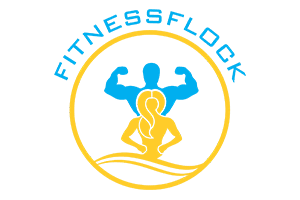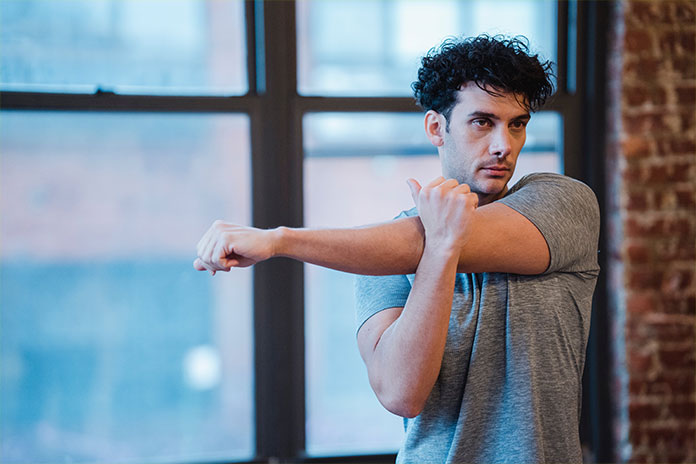If physical exercise (particularly bodybuilding) allows you to gain muscle, certain medications can hinder muscle mass development. This is the case for the medications most used by athletes, nonsteroidal anti-inflammatory drugs (NSAIDs), including:
- Aceclofenac
- Celecoxib (Celebrex)
- Diclofenac (Voltarene)
- Ibuprofen (Advil, Nurofen, Nurofen Flash, Spedifen)
- Ketoprofen (Ketum)
- Naproxen
The Cellular Mechanism Of Muscle Growth
Throughout our lives, our muscles are capable of regenerating themselves. Thus, muscular exercise strengthens them, and after an injury, the muscle reorganizes itself. Increasing the size and number of muscle fibers or myocytes enables muscle growth. It begins with the proliferation of satellite cells, capable of differentiating into muscle cells.
These stem cells in skeletal muscle fibers are often found in a quiescent state: they do not divide. When activated, satellite cells can regenerate muscle by proliferating and becoming myoblasts. Myoblasts fuse and form skeletal muscle fibers. Cell fusions increase the number of nuclei in the muscle cell. Satellite cells can also fuse to repair muscle damage. There is always a stock of satellite cells in a dormant state.
Also Read: Muscle Tear: Symptoms, Causes, Treatment
The Transcription Factor Srf Drives Satellite Cell Behavior
Muscle mass development requires the intervention of a transcription factor called Srf for the Serum response factor. This transcription factor tells satellite cells to fuse with muscle cells.
In case of muscle damage, activated satellite cells migrate to the damaged site, increase, and produce myoblasts to regenerate muscle tissue by cell fusion.
Inhibition Of Muscle Growth Depends On NSAID Dosage
In 2017, over eight weeks, a study from the Karolinska Institute in Sweden tested the effect of nonsteroidal anti-inflammatories based on their dosage during training. The 31 participants, healthy men and women aged 18 to 35 were divided into two groups. Fifteen received 1.2 g of ibuprofen daily, a high dose consistent with standard usage. The other 16 participants were given an active but very low dose of aspirin (75 mg per day).
During the experiment, participants performed resistance exercises that challenged the leg muscles. Quadriceps muscle volume increased in both groups, but significantly less in the “high dose ibuprofen” group (3.7%) than in the “low dose aspirin” group (7.5%). The increase in muscle strength followed the same trend.
Nonsteroidal anti-inflammatory drugs reduce the production of prostaglandins
Nonsteroidal anti-inflammatory drugs act on cyclooxygenases (COX), enzymes that allow the formation of prostaglandins from arachidonic acid. Taking these medications, therefore, reduces the production of prostaglandins. Prostaglandins promote inflammatory phenomena and exacerbate painful sensations, which explains why NSAIDs can relieve them. But prostaglandins also act on protein renewal and, therefore, on muscle adaptation to exercise.
Ibuprofen And Paracetamol Hinder Protein Synthesis
In an American study at Ball State University, 24 men were separated into three groups: some took ibuprofen (1.2 g per day), others took paracetamol ( 4 g per day), and others took a placebo. Participants received these treatments after intense resistance exercises.
Results: 24 hours after exercise, muscle protein synthesis increased by 76% in the placebo group but not in the other two groups.
Ibuprofen and paracetamol, therefore, inhibited protein synthesis. Animal studies show that this phenomenon occurs through the inhibition of prostaglandins. Therefore, ibuprofen prevents the standard adaptation of the muscle to exercise by blocking the production of new proteins following training. Nonsteroidal anti-inflammatory drugs act on protein synthesis signaling pathways, which allow protein turnover in tissues.
Anti-Inflammatories Act On Cell Signaling Pathways
The action of anti-inflammatories on cell signaling was demonstrated in a New Zealand study published in 2014. Sixteen athletic men took a placebo or 1.2 g of ibuprofen in three doses of 400 mg: 30 min before, then 6 hours, and 12 hours after resistance exercise. Biopsies revealed that ibuprofen prevented the activation of specific signaling pathways involved in protein synthesis. Several studies have shown that nonsteroidal anti-inflammatory drugs prevent increased satellite cell numbers commonly observed after exercise. Furthermore, ibuprofen precludes the migration of satellite cells towards muscle damage.
Young Athletes Should Avoid NSAIDs
Therefore, nonsteroidal anti-inflammatories appear to interfere with cell regeneration after exercise and weaken muscles in young athletes. Due to these adverse effects, young athletes should take them with caution. Some authors say anti-inflammatories may benefit older people by promoting muscle mass gain. Still, the explanation is quite different: most older adults suffer from joint pain, and taking anti-inflammatories -inflammatory allows them to train more effectively and for longer, which can translate into better results.
Also Read: Nutrition To Increase Muscle Mass


